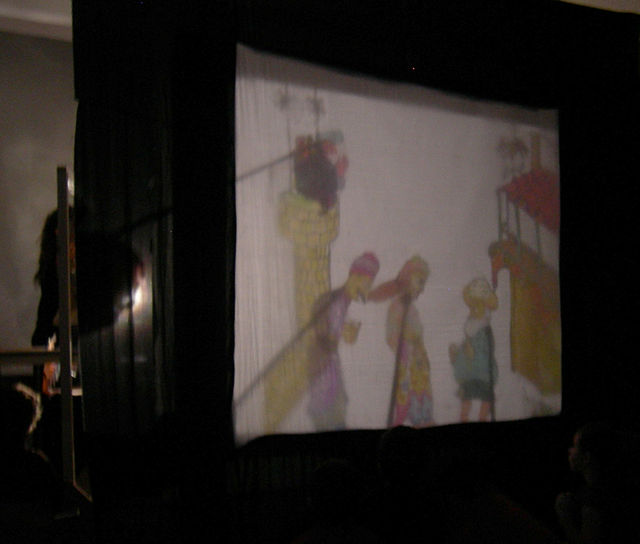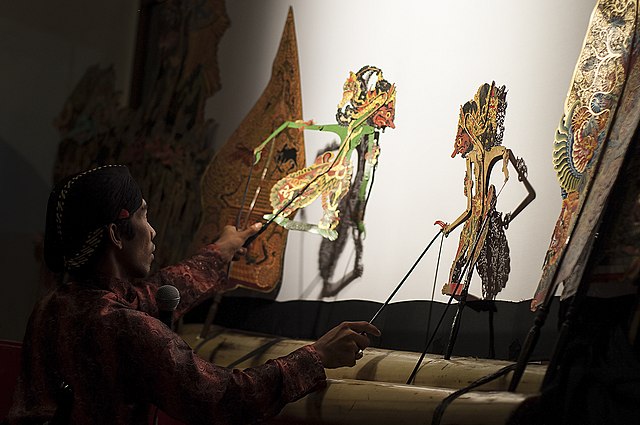Karagöz and Hacivat are the lead characters of the traditional Turkish shadow play, popularized during the Ottoman period and then spread to most nation states of the Ottoman Empire. It is most prominent in Turkey, Greece, Bosnia and Herzegovina and Adjara. In Greece, Karagöz is known by his local name Karagiozis; in Bosnia and Herzegovina, he is known by his local name Karađoz.
Hacivat (left) and Karagöz (right)
Karagöz and Hacivat play at Turkfest in Seattle (2007)
Hayalî Craig Jacobrown at Turkfest in Seattle (2007)
Shadow play, also known as shadow puppetry, is an ancient form of storytelling and entertainment which uses flat articulated cut-out figures which are held between a source of light and a translucent screen or scrim. The cut-out shapes of the puppets sometimes include translucent color or other types of detailing. Various effects can be achieved by moving both the puppets and the light source. A talented puppeteer can make the figures appear to walk, dance, fight, nod and laugh.
A performance of wayang, an Indonesian shadow puppet form
Cambodian shadow puppet depicting Sita
This Chinese shadow puppet is illustrative of the ornate detail that goes into the figures. From the collection of The Children's Museum of Indianapolis.
Chinese shadow puppetry is a form of theater whereby colorful silhouette figures perform traditional plays against a back-lit cloth screen, accompanied by music.From Kaifeng Prefecture.







